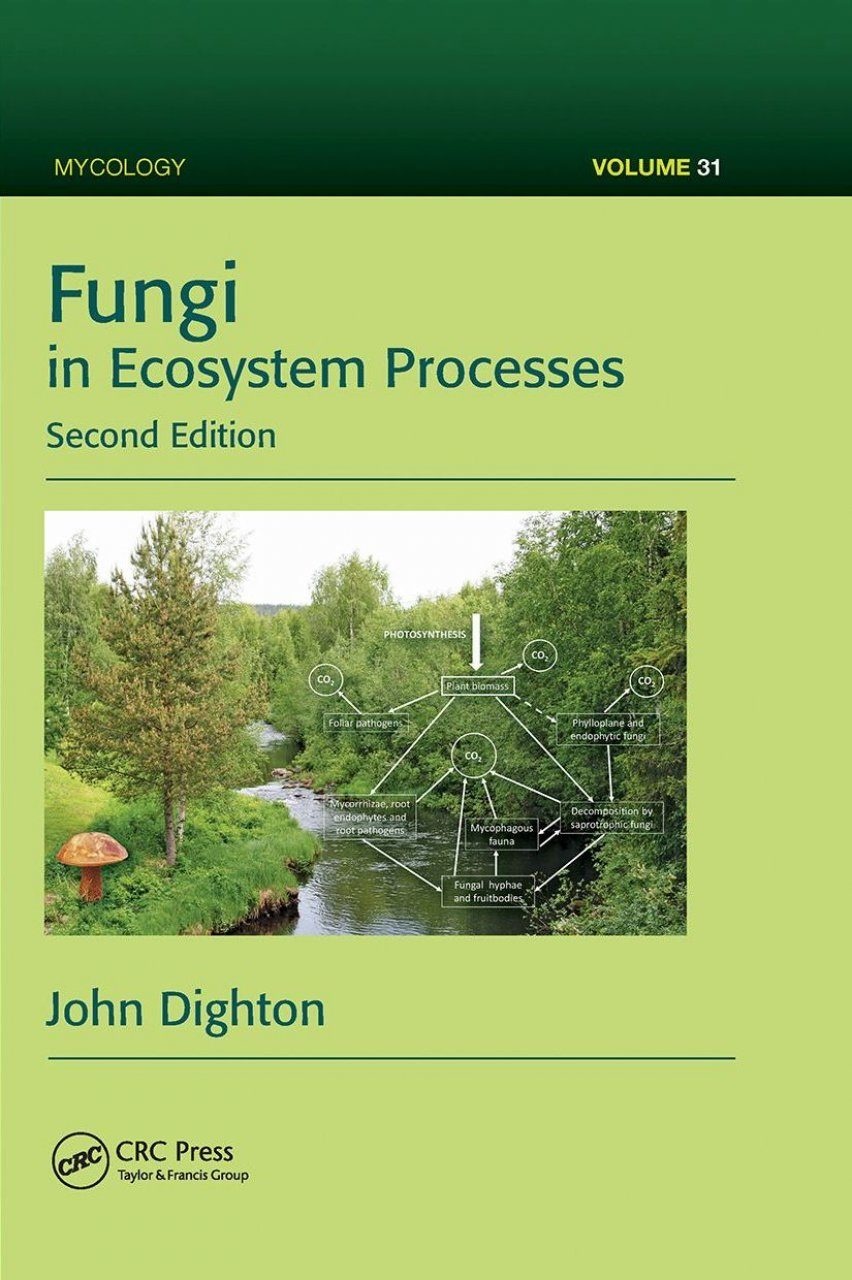
Fungi in Ecosystem Processes
- Including 9% Tax: $85.39
- Excluding VAT: $78.34
- Free shipping in the Netherlands from €50,-*
- Ordered before 5 p.m. on working days? Shipped the same day!
- 14-day money back guarantee
- We are happy to think along!


| Author | John Dighton |
| ISBN | 9781032098036 |
| Publisher | CRC Press |
| Language | English |
| Pages | 408 |
| Size | 234 x 156 mm |
| Images | Images, illustrations and tables |
| Format | Paperback |
| Year published | 2021 |
This new edition of Fungi in Ecosystem Processes continues the unique approach of examining the roles of fungi from the perspective of ecosystem functions. It explores how fungi have adapted to survive within particular constraints, how they help to maintain homeostasis in ecosystems, how they facilitate resistance to perturbations, and how they influence the communities of other organisms.
Updated and revised, the second edition
The book also includes expanded coverage of the role of fungi in suppressive soils, aquatic and marine fungi, modern methods of following food chains in fungal–invertebrate trophic interactions, and the physiology of nutrient uptake by mycorrhizae. A necessary update and expansion to previous material, this book provides an essential reference on the current understanding of fungal roles in ecosystem processes. It also identifies directions for future study, including an emphasis on the need for further research on fungi in built environments.
Table of Contents
Introduction
Why Fungi?
What Are Fungi?
What Are Ecosystems and Ecosystem Functions?
Specific Ecosystem Services Carried Out by Fungi
Conclusions
References
Making Nutrients Available for Primary Production
Making Soils
Breaking Down the Dead: Adding Fertility
Where Does Soil Begin and End?
Keeping Soils Together
Nutrient Availability in Aquatic and Marine Ecosystems
Conclusions
References
Role of Fungi in Promoting Primary Production
Lichens as Primary Producers
Mycorrhizae Help Primary Production
Succession and Plant Community Composition
Plant Communities
Plugging into the Hyphal Network
Interactions with Other Microbes
Mycorrhizae and Stress Tolerance
Mycorrhizae in Aquatic and Estuarine Systems
Fungal Endophytes and Primary Production
Conclusion
References
Role of Fungi in Reducing Primary Production
Pathogenic Fungi and Natural Plant Communities
Pathogens and Agroecosystems
Interactions between Mycorrhizae and Plant Pathogens
Saprotroph–Pathogen Interactions—Biocontrol
Allelopathy
Conclusions
References
Fungi and Secondary Productivity
Fungi in Diet of Vertebrates
Fungi in Diet of Invertebrates
Influence of Faunal Grazing on Decomposition
Influence of Faunal Grazing on Mycorrhizal Function
Influence of Fauna on Fungal Dispersal
Influence of Invertebrate Grazing on Fungal Pathogens
Specific Fungal–Faunal Interactions
Fungal–Faunal Interactions in Aquatic and Marine Ecosystems
Conclusions
References
Fungi as Animal Pathogens: Negative Impacts on Faunal Productivity
Entomopathogens
Nematode Pathogens and Predators
Emerging Vertebrate Fungal Pathogens
Pathogens in Aquatic and Marine Ecosystems
Conclusion
References
Fungal Interactions with Pollutants and Climate Change
Fungi and Acidifying Pollutants
Fungi and Heavy Metals
Organic Pollutants
Fungi and Radionuclides
Fungi and Climate Change
Conclusions
References
Fungi in the Built Environment
Decomposition of Fabric of Buildings
Air Spora, Health Problems, and Molds on Structures
Hot Spots of Fungal Activity Related to Environment
Degradation of Artifacts
Possible Protection of Artifacts
Food Spoilage
Conclusion
References
There are no reviews written yet about this product..
Complete your order